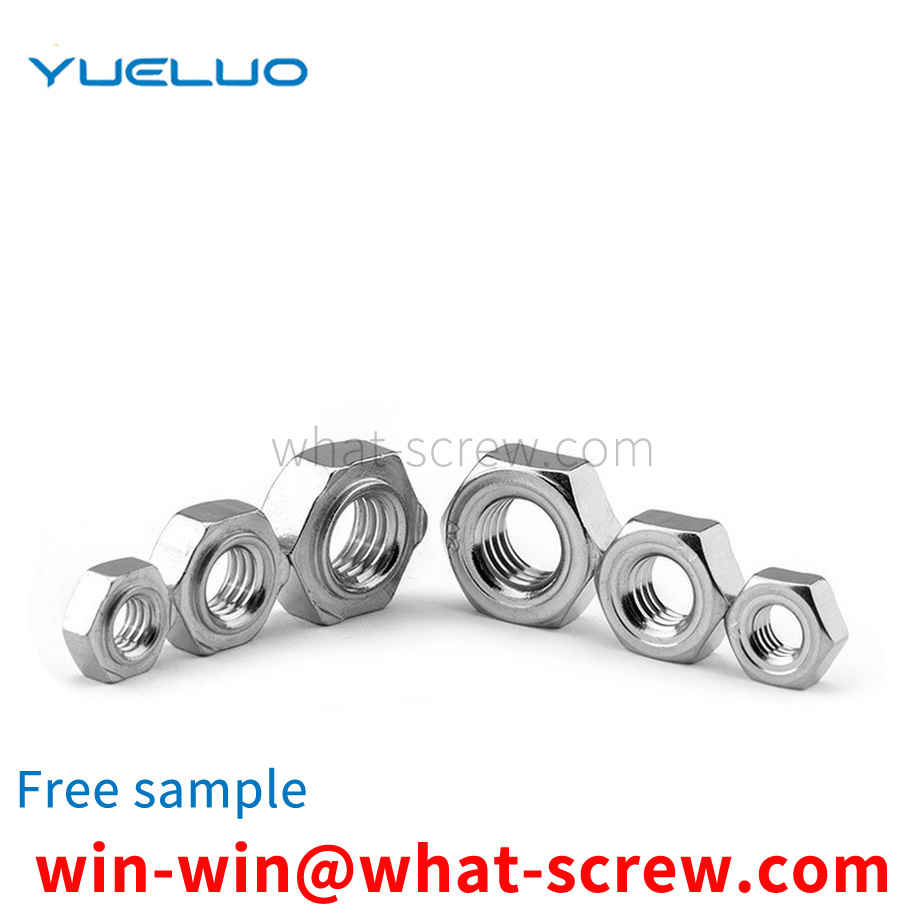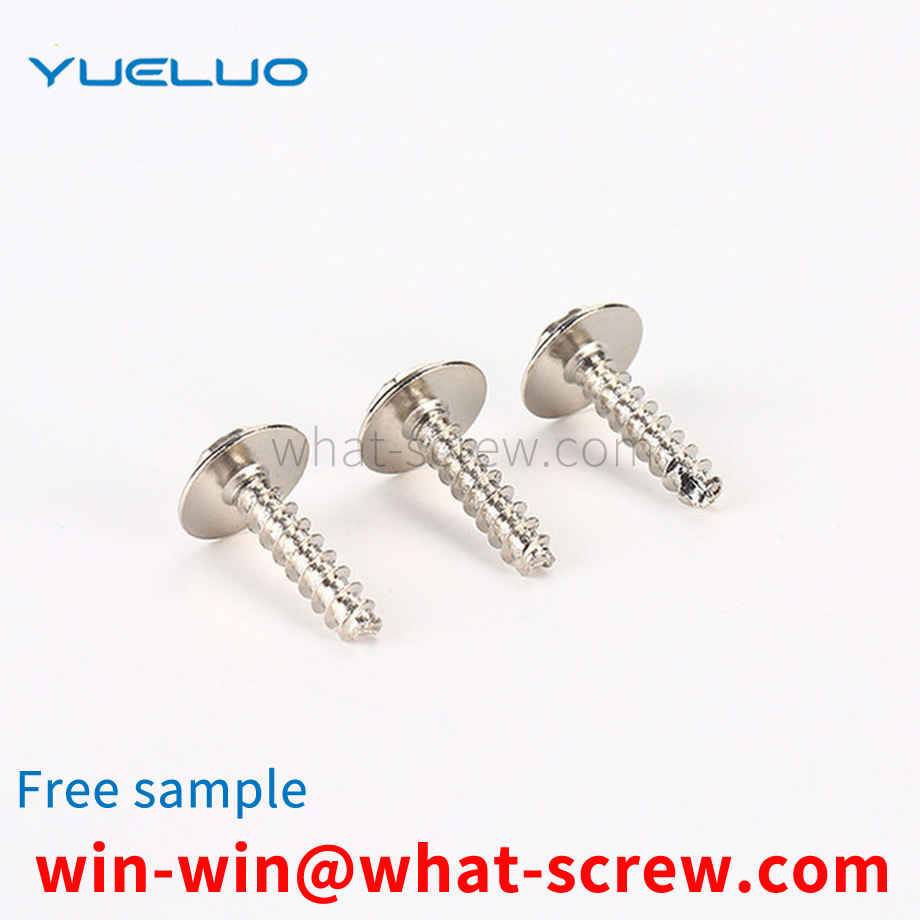What is the tolerance range of precision screws?
What is the tolerance range of precision screws?
Service Hotline
+86760-8787 8587We have more than ten years of experience in screw industry production, the main products are: built-in expansion bolts, full-tooth external hexagon bolts, internal teeth pins, spring pins, semi-circular head internal screws, gypsum board expansion bolts, 8-level national standard GB97 galvanized washers, Hollow aluminum rivet nuts, 2205 screws, 303 stainless steel bolts, ingot nuts, camera tripod nuts, external screws of expansion nails, GB923 decorative nuts, flat gasket spring washers and other fasteners, due to product materials and specifications Different, the price is also different, if you need, please contact us.


In terms of screw standard specification broadcast, there are two versions of the national standard, one is GB70-76, the 76 version, and the other is GB70-8585 version. Our company is now implementing the DIN912 standard, so it should be paid attention to in actual business operations. Difference: GB70-85 and DIN912 completely overlap, so there is no difference in the use of the new standard, mainly because there is a difference between GB70-76 and DIN912: M8 series hexagon products, GB70-76 round head diameter It is 12.5MM, which is smaller than 13.27MM of DIN912. For M10 series inner hexagon products, the round head diameter of GB70-76 is 15MM, which is smaller than 16.27 of DIN912. The inner hexagon of M12 series, the round head of GB70-76 The diameter is 18MM, which is smaller than the opposite side of DIN912, which is 18.27. In addition, the round head diameter of the inner hexagon GB70-76 of M16 and M20 series is 0.33MM smaller than that of DIN912, which are 24MM and 30MM respectively. DIN912 is 24.33MM and 30.33MM respectively. In addition, the width of the inner hexagon between the old standard and the German standard is different due to different standards. The inner side of GB70-76 is smaller, and it should be paid attention to in business operations. In addition, there are also some differences in the carriage screws that may be used at ordinary times. I will also make an explanation here. In the national standard, there are two standards for carriage screws, namely GB12 (small semicircular head square neck screw) and GB14 (large semicircular head square neck screw) Neck screws), and the German standard DIN603 is usually more commonly used in the market. Now to distinguish these three: for the round head and neck, when comparing the same specifications: GB12

Fasteners are also divided into different types according to different uses, and new types of fasteners are developed according to the needs of special environments to meet the needs of all walks of life. The gasket combination bolt is a common fastening bolt. The combination gasket protects the surface of the connected parts from scratches, disperses the pressure on the connected parts, and has a sealing and anti-loosening effect. It is widely used. With the continuous improvement of requirements, the new zinc-aluminum coating surface treatment has gradually become the mainstream surface treatment process because it meets the environmental protection requirements, the surface is beautiful, and the corrosion resistance strength is higher than that of the zinc-nickel surface treatment.


People often think that magnets attract stainless steel to verify its pros and cons and its authenticity. If it does not attract non-magnetism, it is considered to be good, and it is genuine; if it is magnetic, it is considered to be counterfeit. In fact, this is an extremely one-sided, unrealistic and wrong identification method. There are many kinds of stainless steel screws, which can be divided into several categories according to the organizational structure at room temperature: 1. Austenite type: such as 304, 321, 316, 310, etc.; 2. Martensite or ferrite type: such as 430, 420, 410, etc.; Austenite type is non-magnetic or weakly magnetic, and martensite or ferrite is magnetic. Most of the stainless steel usually used for decorative tube sheets is austenitic 304 material, which is generally non-magnetic or weakly magnetic, but may also appear magnetic due to fluctuations in chemical composition or different processing conditions caused by smelting, but this cannot be considered as a Counterfeit or substandard, what is the reason for this? As mentioned above, austenite is non-magnetic or weakly magnetic, while martensite or ferrite is magnetic. Due to component segregation or improper heat treatment during smelting, a small amount of martensite or ferrite in austenitic 304 stainless steel will be caused. body tissue. In this way, 304 stainless steel will have weak magnetism. In addition, after cold working of 304 stainless steel, the structure will also be transformed into martensite. The greater the cold working deformation, the more martensite transformation, and the greater the magnetic properties of the steel. Like a batch of steel strips, Φ76 tubes are produced without obvious magnetic induction, and Φ9.5 tubes are produced. The magnetic induction is more obvious due to the large deformation of the bending and bending. The deformation of the square rectangular tube is larger than that of the round tube, especially the corner part, the deformation is more intense and the magnetic force is more obvious. In order to completely eliminate the magnetic properties of 304 steel caused by the above reasons, the stable austenite structure can be restored by high-temperature solution treatment, thereby eliminating the magnetic properties. In particular, the magnetic properties of 304 stainless steel caused by the above reasons are completely different from those of other materials such as 430 and carbon steel, which means that the magnetic properties of 304 steel always show weak magnetic properties. This tells us that if the stainless steel strip is weakly magnetic or completely non-magnetic, it should be judged as 304 or 316 material; if it is the same as carbon steel, it shows strong magnetism, because it is judged as not 304 material.

Contents of the utility model The purpose of Guangdong Yueluo Hardware Industry Co., Ltd. is to provide a hexagon socket head screw that is easy to disassemble and assemble. In order to achieve the above purpose, the technical scheme adopted by the present invention is as follows: a hexagon socket screw, which includes a cylindrical screw head and a cylindrical screw below the screw head, the screw is provided with threads, and an integrated screw is designed between the screw head and the screw. The circular skirt pad has a hexagonal depression along the axial direction on the screw head, and is characterized in that two symmetrical flat grooves are opened on the upper part of the side wall of the hexagonal depression of the screw head, and the lines of the two flat grooves overlap. Guangdong Yueluo Hardware Industry Co., Ltd.'s socket head screws are compared with ordinary socket head screws. A notch is designed in the inner hexagon space at the top of the screw. In terms of tool use, it can be avoided that the socket head screws must be equipped with the corresponding socket head tools. disadvantages. The improved hexagon socket screw can not only use the matching hexagon socket tool, but also use the traditional flat-blade screwdriver, which is more convenient to use.

The above content is uploaded by Yueluo or the Internet. If there is any copyright issue, please contact [email protected].

What is the tolerance range of precision screws?

How to choose the right stainless steel screw manufacturer?

Why is there an R angle under the head of the hexagon head s...

We have more than ten years of experience in screw industry ...

We have more than ten years of experience in screw industry ...

We have more than ten years of experience in screw industry ...

We have more than ten years of production experience in the ...